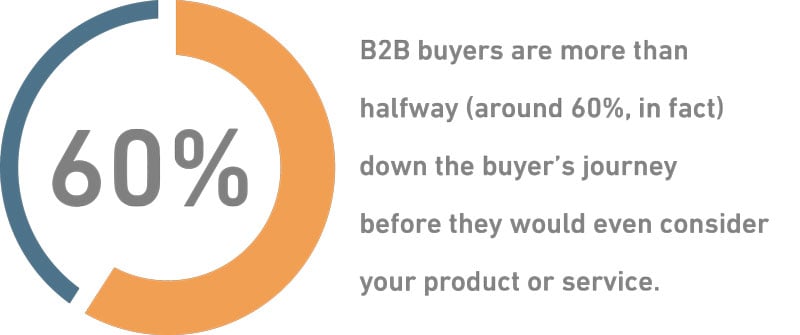Content marketing is about delivering the right message — something that resonates well with your audience and points those potential buyers to the right direction once it’s time to make a purchase.
Now, you probably have a number of beliefs about content marketing that you think are game-changers. But audiences are now more diverse. They are also more independent, especially in terms of data gathering. This means that a lot of the tricks up your sleeve may not even be applicable any longer.
Think about all the t-shirts in your drawer. I’m sure there are a few favorites that already have holes in them. But try wearing one of them on the day when your in-laws come visiting, and you'll see your wife giving you the evil eye.
Those t-shirts with all the holes in them? Those are the obsolete marketing tactics that you still keep at the bottom of your drawer.
The space they’re taking up in your drawer could be used for better t-shirts – or in your brand’s case, better marketing strategies.
The Role of Content Marketing in the Buyer’s Journey
Patrick Spenner from CEB did some research and found out that B2B buyers are more than halfway (around 60%, in fact) down the buyer’s journey before they would even consider your product or service.

Now, a lot of marketers would probably say, “That’s what informative content is for.”
Yes, that makes sense. But what kind of informative content are you delivering?
If potential customers are already halfway through the process of deciding what to purchase, chances are, they’re already mostly done with their research.
It’s the same thing as people buying an airline ticket. They know where they’re going. They know when they’re leaving and when they’re coming back. It’s just a matter of choosing among 3 or 4 airline companies.
What could the final deal breaker be? Most of the time, it’s the price that comes with the airline ticket. However, we all know that there’s always so much more beyond the cost.
Marketers have to learn how to provide SPECIFIC information that buyers may not have. One of the airline companies, for example, may offer better food at the same price as another airline. The other, however, may have started a campaign about ensuring that the air circulating around the plane while in flight is purer, fresher, and cleaner. If the latter serves as a follow up for content that states how air is circulated around a plane, then this airline might seem like a more trustworthy choice. Information that regular passengers will not easily have access to will be more valuable than a great meal, after all.
It’s specific information like this that could change a buyer's direction as they approach their final purchase decision, regardless if one option is cheaper than the other. This is what sets “high-quality” content apart from just your usual informative content.
Content Marketing Beliefs You Have to Get Rid Of
Just to make things clear – our end goal here is to create the kind of impact that can change people’s minds no matter how far along the buyer’s journey they are.
Content marketing should never be robotic, neither should it be reliant on what everyone else is doing. Here are a few beliefs that you have to get rid of if you really want your potential customers to choose you once it’s time to make a decision:
1. Creating a statistic-filled infographic makes people think you’re the expert.
Actually, it doesn’t.
Yes, people love seeing statistics. People are also visual creatures, so images that pop out (infographics included) are always good for capturing attention. But if it’s a deal-breaker you need, then it’s not about how fancy your infographics are or how many numbers you highlight. It’s all about how you use your infographics that would make the difference.
Don’t just display the facts, explain and expound on them. You should always have some meaty written content that comes with the infographic to make sure people understand how those numbers impact them.
2. Teaching potential clients about the benefits of your products and services will make them say yes
Salespeople and marketers, for the longest time, have been highlighting the benefits of products and services to convince potential clients.
In reality though, it’s not just about informing them about what you can do. It’s about highlighting their pain points and showing them how you can address those issues. It has to be more about them, less about you.
3. Giving them a free checklist or guide turns audiences into customers.
Sure, people love freebies. A glaring “Free E-Book!” on your page could be just the thing to make people give you their email address.
But does it push them to make a purchase?
Not necessarily.
If you are unable to connect their needs to your solutions, then your free downloads will be just that – free downloads.
Always go back to the fact that they are already halfway done with the process before they even see you. From there, you’ll realize that your content should do three things:
- Be found during the 1st half of their journey.
- Make an impact to make it to the shortlist.
- Connect your products and services as the ultimate solution to their specific pain points.
You see, there isn’t any single trick or key to impactful content marketing. It’s a series of well-planned strategies that ensures a “Yes!” at the end of the buyer’s journey.
Click to schedule your complimentary 30-minute inbound marketing strategy session below.
You’ll learn the number one thing you can do to solve common marketing problems that are holding your business back.



